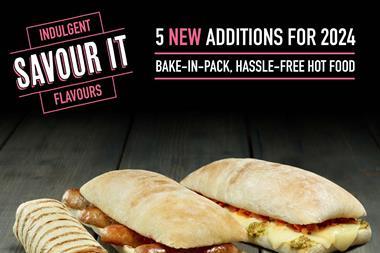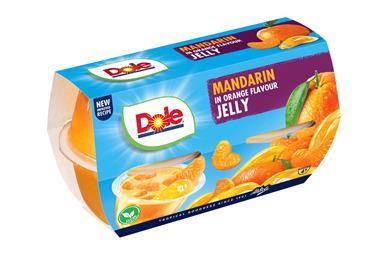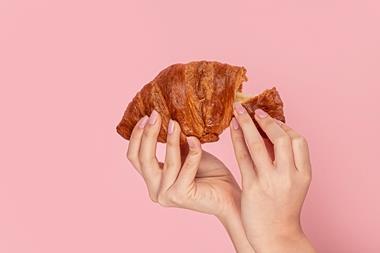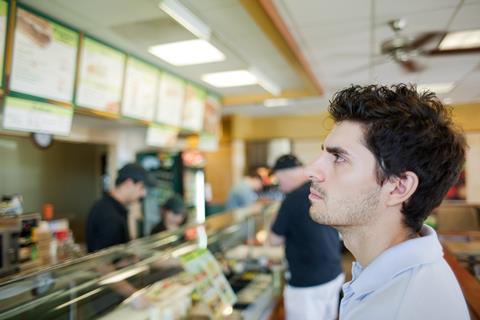
Many of you have been doing food to go for a long, long time. It’s been a big success story that has really put a lot of sites on the map – whether that’s because you’ve got a Greggs and/or a Subway, you’ve decided to do your own thing or you do a really popular meal deal.
Whatever you do, you may be of the opinion that you can grow your food to go sales even further. Obviously, not everyone has big budgets for a full-scale refit so we asked two food-to-go (FTG) experts for their advice, Matt Cundrick and Gavin Rothwell.
Cundrick has over 20 years’ experience in FTG operations across convenience and forecourt retail. He currently works as a freelance consultant to support suppliers and retailers in optimising their FTG proposition.
Meanwhile, Rothwell helps businesses grow their FTG by sharing best practice and innovation, drawn from an extensive retail and FTG safari programme that he runs each year across Europe and North America.
Stand back. Watch. Listen.
“Sometimes the simplest tool can be to spend a few moments every day observing your customers. Committing fully is important – but if you can do that, for even a small window of time, you can drive monumental change in your FTG business,” says Cundrick.
He advises forecourt retailers to consider the following:
• Who are your FTG customers compared to your wider shop customers?
• Is the customer journey logical and clutter-free?
• How do customers navigate your FTG fixtures?
• Which sightlines do they follow?
• Is your coffee a beacon for them, what do they do in the dwell time around your vended coffee machines?
“These answers can help you make simple equipment and product moves or add navigation signage to improve the customer flow, throughput and experience,” he explains.
Data. Data. Data.
Rothwell says looking into your data sets will provide answers on optimal range, time of day availability, wastage, trading times, pricing, customer demographics and so much more. “Clearly, looking at this through the right lens is important – FTG and hot FTG in particular, is a different beast to most products and services you’ll offer in-store. Thinking about key missions and sales windows plays an important role – remember the most lucrative areas for driving sales and profit will focus on production planning and availability.
“Simply ensuring you’ve the right food-to-go products, in the right quantity, in the right condition, on the shelf at the right time can drive significant sales uplifts. If you bake sausage rolls and pasties in-house, for example, how do you manage the production of these to ensure they are fresh and available? Is there scope to refresh this range with newer lines? There’s a lot of choice out there, make sure you consider your existing and potential customers when adding range.”
He says retailers shouldn’t neglect their wider store data either. “There may be tell-tale signs of your customers’ shopping patterns playing out in grocery or fuel patterns that can be built into your thinking.”

Hygiene and display
Both men agree that sometimes tired displays need nothing more than a thorough deep clean, a lick of paint, and some LED lighting strips.
“For the sake of a few hundred pounds, your FTG area can feel like something new and exciting. And most importantly, this can also give the consistently strong perception of hygiene and freshness – subconsciously this is a major factor in customers’ selection process, especially in FTG,” explains Cundrick.
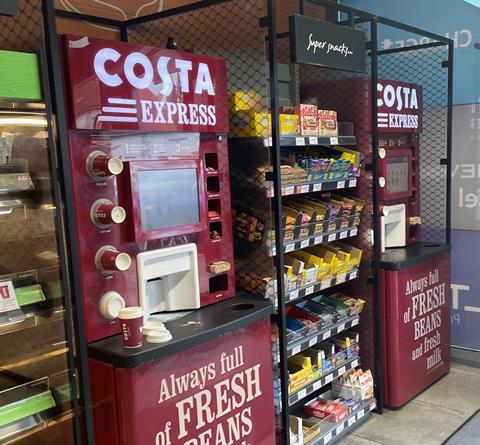
Drive the impulse
While high cost relays and rebrands might be for the longer term, moving equipment and location of certain products around the store can often yield great short-term results, says Cundrick.
“In a recent project we looked at the dwell time of coffee vending, at the point of vend customers are captive to the vicinity of the machine, rarely straying three-to-four steps away, but are open for suggestion and intrigue. How can you capitalise on this in your locations? Can you provide impulse bakery lines next to the machine? Even simple defrost-and-serve sweet products can begin to drive up average spend and provide fuller solutions for your customers.”
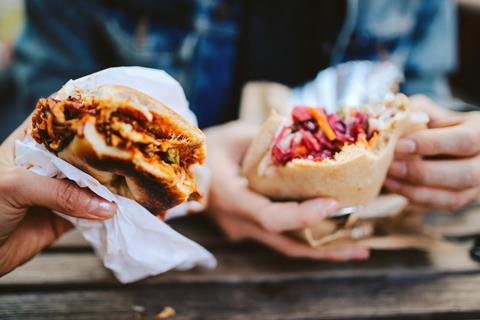
Range is key
Rothwell says that by really taking time to consider your range against your customer type and shopping habits you can drive performance in all areas. Have you comfortably got the right range of cold sandwiches and hot eats that are required by your customers? If you have high volumes of HGVs, have you matched this with bigger eats and meal pots? How much of your product is comfortably portable, and can be eaten with one hand?
“Even if this is a longer term goal, if you start thinking about all this now, you’ll be better equipped to position yourself for longer term FTG success,” he says.
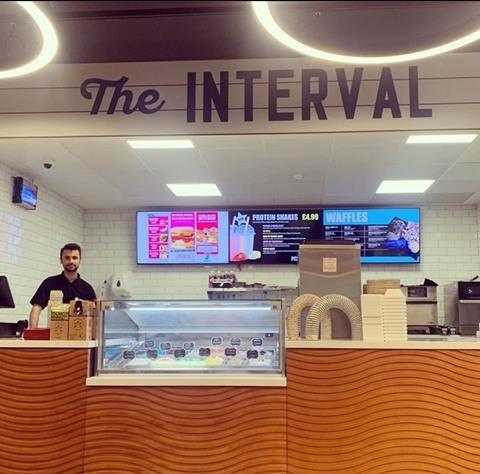
Improved site, improved FTG offer
Top 50 Indie Hockenhull Garages had a large shop extension at its Esso Westside site last year and added more FTG courtesy of Stone Willy’s Pizza and Pete’s Treats Dessert Company.
Managing director Joe Hockenhull says before the extension their FTG range was limited to Spar sandwiches and crisps. But, after experiencing success with Stone Willy’s Pizza and Pete’s Treats Dessert Company at the company’s The Stage and Shell Corby sites, they decided to add them at Westside.
Joe says he likes the two concepts because of their flexibility and the fact that they enable the site to offer crossover promotions, which go down very well.
“We now offer a meal deal that has one large pizza, two sides and either two milkshakes or two waffles with ice cream and this is a really big seller. We also do multibuys and deals for larger groups of people – these went well at Christmas.”
Joe agrees that some FTG can be very labour intensive and says: “Ours is very time specific ie if we get a lot of orders in the day it can be difficult for the team to manage both online and in-store orders. However, a large chunk of the customers come in the late evening and through the night, which is usually a quieter period on the forecourt for us so it works well.”
The profit margins work well too: “If waste and portion sizes are controlled as they should be, the desserts margin is around 70%. Stone Willy’s is less because it is so heavily deal related but it’s still 50% and upwards.”
Joe adds that FTG is popular with a large audience, from children and their parents, to young couples and workmen, with the Premium Milkshake one of their biggest sellers across the company.
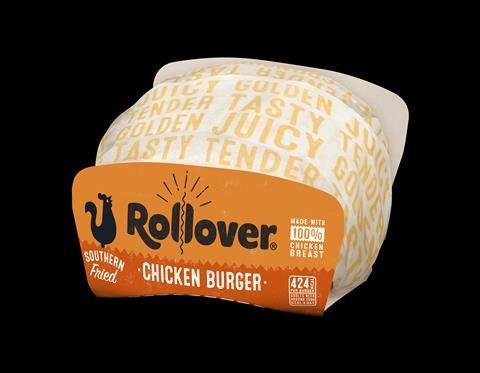
Southern fried addition
Whatever you offer in the way of FTG, it’s always good to have new products to keep your customers interested and coming back for more.
Rollover, known for its popular hot dogs, has a new addition to its portfolio – the Southern Fried chicken burger.
This is the brand’s first chicken burger in its range, made with 100% chicken breast and served in a hand-finished bun. The company says the launch ties in with the increasing popularity of chicken.
According to Lumina Intelligence’s Eating Out report, four out of the 10 fastest-growing restaurant chains specialise in chicken. It has widespread appeal and is the only protein to see growth in both value and volume (in-home) over the last five years.
Rollover’s Halal-certified Southern Fried chicken burger takes just 18 minutes to cook and comes with fully recyclable packaging and pos material, to help retailers maximise sales and visibility in-store. The company recommends a selling price of £3.29-£3.50.
Tony Owen, general manager at Rollover, says: “As pioneers in hot food-to-go, committed to driving innovation, we are thrilled to bring excitement back to the category with our first chicken burger.
“Our new crispy Southern Fried chicken burger delivers on consumer demand for hot food-to-go options that deliver on flavour, quality and satisfaction. We know that our retail partners are always looking to evolve their offerings to keep their ranges fresh and inviting, and we’re confident this new option ticks all the boxes.”























